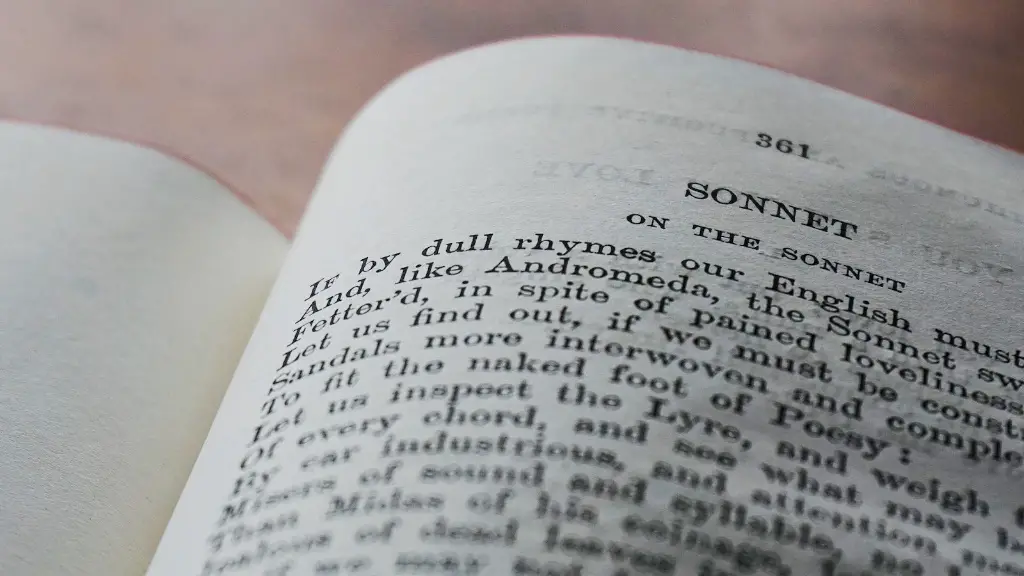What are Line Breaks in Poetry?
Line breaks are perhaps the most important tools available to a poet. They help to shape the poem, emphasising certain words, lines, or ideas. They also help to tell the story, allowing the poet to control the pace and intensity of their work. But what exactly are line breaks?
Line breaks are defined as the moment when one line ends and the next begins. This could be at the end of a word, or in the middle of one. They can be used within individual lines, as well as between them. Depending on the poet’s style, they can be used in a range of different ways.
The purpose of a line break is to control the flow of the poem. It can be used to emphasise certain words. It can also be used to create contrast between two lines. Used correctly, line breaks can give the poem a certain rhythm and mood. They can also help to set the tone for certain sections or even the entire poem.
Line breaks can also be used to create different lengths of lines. This is known as metre. Metre is the structures of sounds and pauses in poetry. Different metre structures can be used for different types of poetry. For example, a line of poetry can be longer or shorter to change the rhythm if it is too predictable.
Line breaks can also be used to make it easier to read a poem. By breaking a longer line into two, the poet can control the speed of the reading. This way they can make the poem more readable. By breaking it into two, they can make sure that the reader pauses and takes a moment to think about the meaning of the words.
Line breaks can also be used to give the poem a sense of momentum. By creating a line break, the reader can be drawn further into the poem. This is especially true when lines are broken in the middle of words or phrases. In this way, the poem can create tension which draws the reader in further.
The Purpose of Line Breaks
The primary purpose of line breaks is to create the flow of the poem. Line breaks act as a type of punctuation within a poetic work. While most types of punctuation are used for structural and grammatical reasons, line breaks are used for creative purposes. They can be used to control the speed, intensity, and emotion of the poem.
Line breaks can be used to emphasise certain words or phrases. As mentioned, when used correctly they can draw the reader’s attention to the words and the sentiment. This can be used to create contrast between two lines, create meter, and control the flow of the poem.
The intention of line breaks is to evoke a certain feeling in the reader. This feeling can be of intensity, increase in speed, tension, and more. The goal is to create an overall emotion within the poem as a whole.
Types of Line Breaks
There are a few different types of line breaks. The two most common are the end-stopped line and the enjambed line. The end-stopped line is when the poem ends on a period, comma, exclamation mark, or other type of punctuation. In these lines, the pacing is determined by the punctuation marks.
An enjambed line is when the line does not end on punctuation. The words flow into each other to create a more constant buildup of intensity and pace. This type of line break is used to create intensity and to emphasise certain words.
Line breaks can also be used within a line. These are known as caesuras. They are often used to create a sense of pause and to draw attention to a certain word or phrase. They are also often used to create a feeling of suspense or drama.
Famous Examples of Line Breaks
There are many examples of successful line breaks in poetry. William Shakespeare’s famous work, Romeo and Juliet, uses line breaks to great effect. The infamous phrase “Shall I compare thee to a summer’s day?” is broken into two lines, with the end of the line emphasising the word “day”. This line break creates a great sense of intensity and emotion.
Another example of a famous line break is in William Wordsworth’s poem, “Composed Upon Westminster Bridge”. In this poem, Wordsworth has used line breaks to emphasise the words “Earth has not anything”. This emphasises the grandeur of the scene he is describing.
The Effect of Line Breaks on Poetry
Line breaks are an essential part of modern poetry. They are not only used to control the flow of the poem, but they can also be used to emphasise certain words and create a certain atmosphere. When used correctly, line breaks can create a powerful statement that stays with the reader for a long time.
Line breaks can be used in many different ways, from controlling the metre of the poem to creating dramatics. They can also be used to give the poem a certain rhythm or to create suspense or intensity. The way a line break is used can have a great impact on the overall effect of the poem.
The Pros and Cons of Line Breaks
Line breaks can be both beneficial and detrimental when it comes to poetry. On the one hand, they can be used to create rhythm, emotion, and a sense of momentum in the poem. On the other hand, if used incorrectly, they can cause the poem to sound disjointed or create distraction.
To get the most out of line breaks they should be used in a way that serves the purpose of the poem. If the poem is trying to create a certain emotion or atmosphere, the line breaks should be used to achieve that goal. If they are used incorrectly, they can make the poem sound disjointed and difficult to read.
The Importance of Line Breaks in Poetry
Line breaks are an essential part of modern poetry. They can be used to create rhythm, intensity, and emotion. When used correctly, they can help to make the poem powerful and memorable.
However, line breaks should not be used as a crutch to make the poem sound poetic. They should be used to serve the overall goal of the poem. When used correctly, line breaks can help to create an emotional statement that the reader can remember for a long time.
Examples of Successful Uses of Line Breaks
There are many examples of successful uses of line breaks in poetry. Famous poems such as “The Road Not Taken” by Robert Frost and “The Lake Isle of Innisfree” by William Butler Yeats both make use of line breaks to great effect.
Robert Frost uses line breaks to emphasise the word “difference” in the poem “The Road Not Taken”. He also uses line breaks to create a sense of suspense. William Butler Yeats uses line brakes in “The Lake Isle of Innisfree” to emphasise the words “peace” and “quiet” creating a sense of calm.
The Impact of Line Breaks on Audiences
When line breaks are used correctly, they can have a powerful impact on the audience. The line breaks can help to emphasise certain words and feelings, creating a lasting impression on the audience.
Line breaks can also be used to control the speed and the mood of the poem. This can make the poem easier to read and help to keep the audience engaged. If used correctly, line breaks can help to make the poem more powerful, impactful, and memorable.
Conclusion
Line breaks are an essential tool in poetry. They are used to create rhythm, intensity, and emotion in a poem. They can be used to emphasise certain words and create a sense of suspense or drama. When used correctly, they can make a poem powerful, impactful, and memorable.


